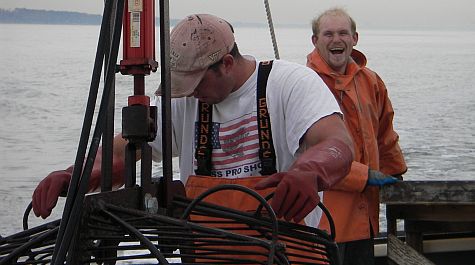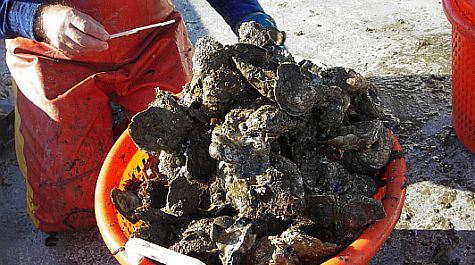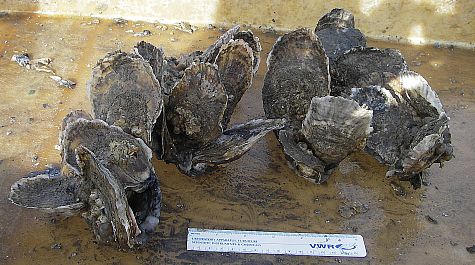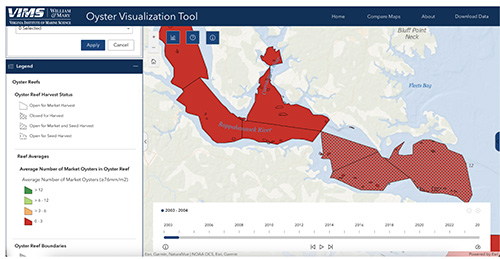Molluscan Ecology Monitoring & Advisory
The monitoring data that we collect is used to help guide fisheries management and the industry as well as to assess the effects of restoration efforts.
Programmatically, we have been in the business of monitoring Virginia’s oyster resources since the 1940s. Since 1993, a collaborative agreement with the Virginia Marine Resources Commission (VMRC) Conservation and Replenishment Department has led to continued oyster monitoring as well as oyster stock assessment and restoration activities throughout Virginia waters. Annual summaries are presented to the Shellfish Management Advisory Committee (SMAC) as part of the ongoing resource management process. Current monitoring efforts include:
Oyster DredgeThis survey has been conducted annually in the fall since the 1940s and has been a collaborative effort between VIMS and VMRC since the |
Oyster Patent TongThis survey has been conducted annually in the fall since 1993 in collaboration with VMRC. The patent tong survey is a quantitative survey that provides information about |
Oyster Shellstring (
|
Virginia Oyster GIS Visualization Tool (In Development)An in-house oyster visualization tool is being developed with potential availability by December 2025. A storymap has been created to describe the use and provide examples for use of this new tool. To see this storymap, click on this link. |
Virginia Oyster Productivity Information Tool (best viewed in Firefox or Safari browser)The most rapid expansion of the aquaculture industry in Virginia has been in hatchery-based production of cage-cultured oysters on private grounds. Conflicts have arisen between new user groups residing along the Chesapeake Bay shore, and a growing industry that works primarily in nearshore waters. Additionally, as the shoreline has been developed, there are very limited access points along the waterfront where commercial activity can occur. This study has characterized the oyster industry as it exists today, examined the regulatory framework, and closely examined major issues that impact future expansion. |
|
VOSARA |





